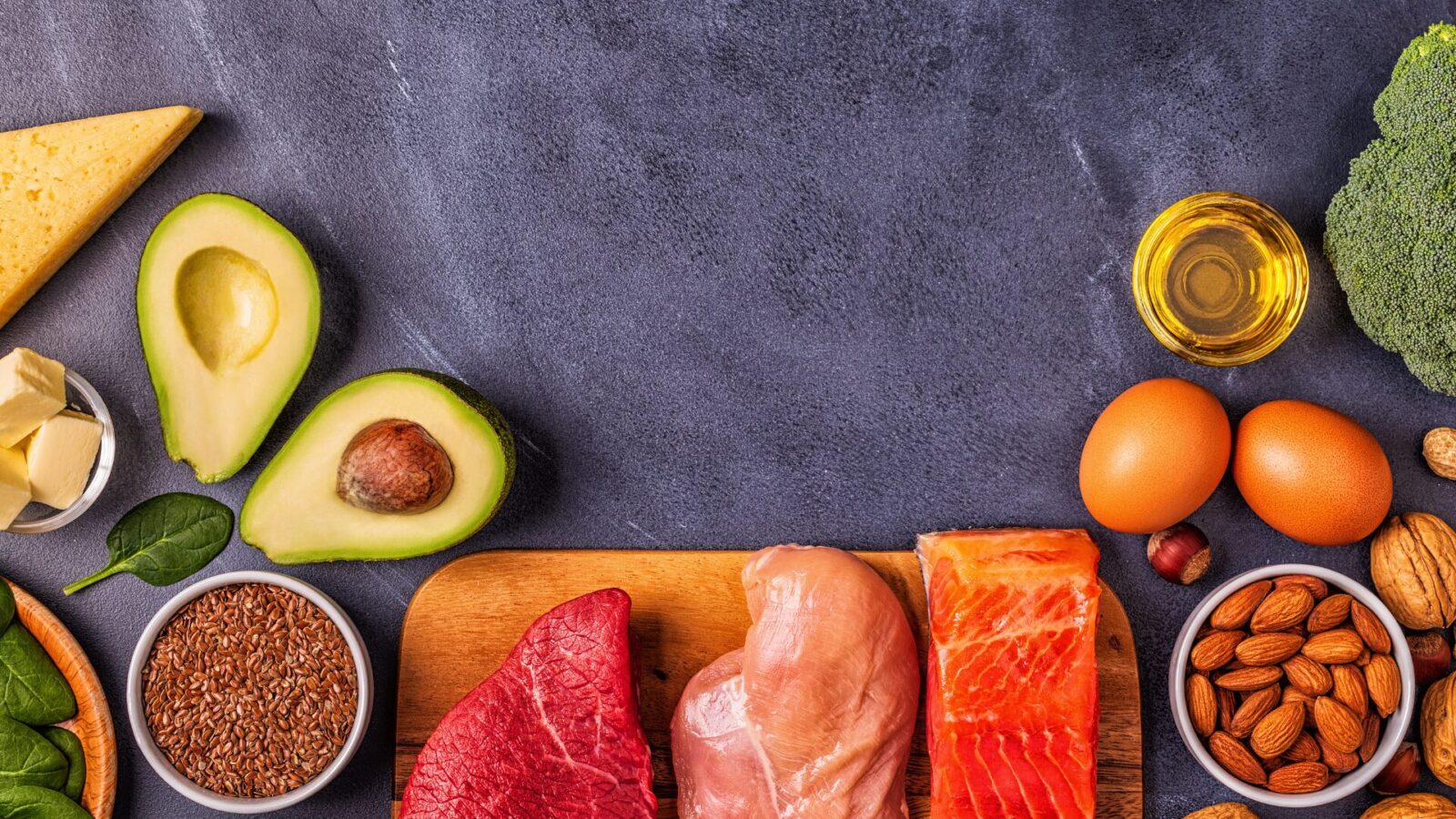Broadly defined, high-fat diets (keto, paleo, optimal diet) are diets that contain adequate amounts of fat and protein and limited amounts of carbohydrates. The generally accepted food pyramid, which involves consuming large amounts of carbohydrates from wheat products (cereals, flakes, groats, rice) with low protein and minimal vegetable fats, as well as consuming 3 to 5 meals a day, can ultimately lead to metabolic disorders and diseases considered lifestyle-related, including hypertension, type 2 diabetes, and obesity. Consequently, autonomic nervous system activity increases during this time, exacerbating symptoms of diseases caused by excessive carbohydrate intake. In patients on high-fat diets (for at least 6 months), in addition to fat burning and weight loss, a significant reduction in the above-mentioned symptoms can be observed, and consequently, a reduction in autonomic nervous system activity, particularly in its sympathetic division.
High-fat diets and the traditional food pyramid
Experts agree that poor eating habits among modern people are responsible for at least six of the top 10 causes of death: heart disease, cancer, stroke, diabetes, hardening of the arteries, and liver disease. However, this convergence disappears when it comes to determining the composition of a healthy diet and the opinions and recommendations on what to eat and what to avoid—there would be at least several hundred. It must be admitted, however, that the dominant model is the so-called health pyramid, also known as the optimal eating model. At its base are bread, cereals, rice, and pasta; in the middle are vegetables, fruits, and dairy products, along with meat, poultry, eggs, and nuts; and at the top are fats, oils, and sweets. According to most experts, this should be the dominant eating model.
The proceedings of one of the countless scientific conferences devoted to healthy eating models included the following recipe for longevity: 3 to 5 meals a day. Each should contain whole grain bread, cereal, groats, pasta or potatoes, vegetables, and fruit (must be eaten with every meal; frozen is fine). Additionally, between meals, you can eat at least 2 cups of skim milk, the same amount of kefir and yogurt, and 2 slices of low-fat cheese. A serving of fish, poultry, peas, beans, or meat – your choice. A tablespoon of oil or olive oil and no more than 2 teaspoons of soft margarine without trans fats. Mineral water and vegetable juices.
Research conducted in European Union countries shows that 38% of Europeans surveyed are convinced of the beneficial effects of nutrition on our health, but a staggering 71% see no need to change their diet. However, it so happens that residents of countries whose diets are dominated by products officially considered harmful are completely unconcerned by the findings of academic science and simply follow common sense at the table.
Diet is just one element of lifestyle, and you shouldn't overdo it with choosing and composing fancy foods. You simply need to eat in a way that makes you feel healthy and well. If we start restricting ourselves and going against our body's advice, we can forget about the long-term effect—that the diet will make us healthier. Besides, no diet will ultimately improve our well-being if it's not accompanied by increased physical activity.
It's also worth knowing that exercise increases the number of lipoprotein lipase molecules on the surface of muscle cells, which capture fat from the body. In turn, ceasing exercise causes LPL to settle on fat cells (adipocytes). In fact, when embarking on any diet, we must supplement it with two additional elements: the aforementioned physical activity and a healthy lifestyle, which involves avoiding stress and giving up stimulants (alcohol, tobacco).
In the 21st century, it's hard to believe that fat can be good for us. If we're typical members of Homo sapiens living in the 21st century, and we hear everywhere that fat makes us fat, raises cholesterol, and causes heart disease, liver disease, and atherosclerosis, it's hard to believe that fat can help us lose weight and lead a healthy life.
A definition of proper nutrition is necessary here, meaning one that involves a rational combination of foods to provide the body with all the necessary nutrients. Fats play a key role, as they are the main energy component of food.
The importance of fats for health
The role of fats was first discovered in the 19th century by Rubner and Atwater. However, they lacked the tools to examine differences in their nutritional value and usefulness, so they treated all types of fats—both animal and plant—equally. Only later was it determined that fats contain essential vitamins (A, D, E) and fatty acids and are an indispensable building block for tissues and organs, constituting 10 to 25% of body weight.
If we were to list a few of the most important reasons why we should consume fat:
- They constitute a rich and irreplaceable source of energy used in nutritional processes.
- Alongside proteins, they are a fundamental building block of cell membranes.
- They are a source of essential unsaturated fatty acids, such as linoleic and alpha-linolenic acid.
- They contain fat-soluble vitamins (A, D, E, and K).
- They participate in the synthesis of bile salts and numerous biochemical reactions.
- They transport cholesterol and triglycerides, which prevents atherosclerosis.
- They are stored as reserve material, enabling the body to survive during periods of food shortage.
If we reverse the food pyramid and use a model based on fats and proteins, our daily composition should be as follows: approximately 100g of protein, 250–350g of fats, and 30–60g of carbohydrates. Maintaining a favorable balance between these components will improve the diet's quality, the more biologically valuable the proteins and fats, and the fewer unnecessary elements it contains.
Animal fats, consumed in natural products, are best. Lard and long-chain free fatty acids provide the most energy. The most valuable fats for humans are those found in egg yolks, butter, and cream, which contain all the necessary components for fat burning.
Animal bodies synthesize fats using the same enzymes and minerals as humans. Plant fats, while also valuable, require additional enzymes and vitamins and are therefore less beneficial.
The best fuel for the human body is fats with long hydrocarbon chains. By burning hydrogen, the body produces more energy than by burning carbon. Therefore, fats with a high hydrogen content are more caloric and a more effective energy source.
A human body on a high-fat diet uses less oxygen, leading to less fatigue and greater performance. The respiratory quotient for fat is 0.7, meaning the body obtains more energy from burning hydrogen than carbon.
What effect do high-fat diets have on the activity of the autonomic nervous system (ANS), especially its sympathetic part?
The autonomic nervous system is divided into
- Sympathetic – responsible for the “fight or flight” response.
- Parasympathetic – responsible for the “rest and digest” or “freeze” reactions.
Factors that stimulate the sympathetic nervous system include:
- Stress.
- Emotions.
- Alcohol and stimulants (amphetamines, mephedrone, cocaine).
- Excessive physical activity.
- Highly processed foods with high sugar content.

People in a state of sympathetic arousal have difficulty achieving homeostasis. Increased cortisol levels, associated with sympathetic nervous system stimulation, can lead to type 2 diabetes, hypertension, heart attacks, and strokes.
Lifestyle changes and a high-fat diet reduce the symptoms of metabolic disorders and lower the activity of the sympathetic nervous system. Consequently, the activity of the parasympathetic nervous system, responsible for the body's regeneration, increases.
This makes it easier for people on high-fat diets to achieve a state of relaxation and regeneration, which leads to an improved quality of life.
The Impact of High-Fat Diets on Health and the Autonomic Nervous System
High-fat diets, such as keto, paleo, and the optimal diet, are based on increased fat and protein consumption while limiting carbohydrates. Unlike the traditional food pyramid, they may reduce the risk of lifestyle diseases such as type 2 diabetes, hypertension, and obesity.
Changing our dietary patterns leads to a reduction in the activity of the sympathetic nervous system (ANS), which results in reduced metabolic stress and improved health. Regular consumption of high-fat diets, combined with physical activity, promotes fat burning, improves body performance, and supports regeneration by activating the parasympathetic nervous system.
Fats, a key energy source, provide essential vitamins and fatty acids that support proper body function. Eating the right proportions of fats, proteins, and carbohydrates in your diet can significantly improve your quality of life and reduce the risk of chronic diseases.

Jakub Łamajkowski
My adventure with physiotherapy began while studying at the University of Physical Education in Katowice. I took my first professional steps at a rehabilitation center for disabled children. Ultimately, I decided I needed to find my own path in the profession I loved. It was then that I met Dr. Składowski, who completely changed my approach to physiotherapy, and consequently, to patients and their treatment. Read more...





